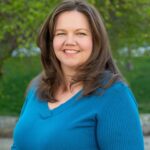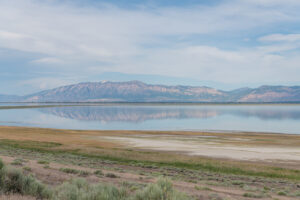In cities across the nation, pollution levels are shown to be higher where incomes are lower. Research has shown that people living on Salt Lake City’s west side are hit harder by pollution than residents of the east side. For example, the Rose Park neighborhood is close to pollution sources like freeways and industrial areas to its north. This results in carbon dioxide levels twice as great as they are at the University of Utah.
This east and west side divide originated through a variety of geographical, industrial, and social factors. It has since resulted in limited access to energy saving resources for certain communities. To understand where this divide stems from, we look at the practice of “redlining” and what it has meant for Salt Lake City’s west side.
How Housing Policies Shaped Our Neighborhoods and Resulted in Higher Pollution
When the railroad was developed in the late 1800’s it effectively split Salt Lake City in two. The Jordan River was used as a sewer and refuse dump, making the area undesirable for residential development. However, as industry grew around the tracks, worker housing began to pop up on the west side. East side properties on the other hand, were located further away from the polluting railroad tracks and Jordan River, making the east side more desirable for the more affluent, mostly white, population.
Then, starting in the 1930’s, Salt Lake City lenders used a practice now known as “redlining” to restrict home loans and insurance in areas of the city with high densities of people of color. At the time, the Federal government’s Home Owners’ Loan Corporation (HOLC) graded neighborhoods into four categories, based directly on the racial and ethnic identity of residents and their socioeconomic status. Neighborhoods with high numbers of minority occupants were designated as “hazardous” and marked in red, indicating that they were high-risk and lenders should not finance mortgages in the area.
One disturbing example is shown in this historical map of Salt Lake City of what is now the Marmalade district. The area was graded as red or “hazardous” because “only laborers live there, some of them foreigners.” It is worth noting that the property designations in Salt Lake City also graded parcels based on whether they are within the “smoke belt” and exposed to higher levels of pollution.
With a cultural divide firmly in place, the HLOC’s racist property designations rated the majority of Salt Lake City’s west side as “hazardous” or “definitely declining.” Ultimately, this designation made it difficult for people living in Salt Lake’s west side to receive home loans. The practice of redlining has had other lasting effects on access to clean air, education, economic opportunity, and even air temperature. Nearly 90 years later, redlined neighborhoods are hotter than others, because they have more concrete and fewer trees and green spaces.
Renewed Efforts to Address the West Side Divide
Salt Lake City is leading the way to implement services to directly alleviate the impacts of historical segregation and racism imposed by redlining practices. In 2014, Salt Lake City adopted the Westside Master Plan, which celebrated the west side’s diversity and called for increased sustainability, safety, and health for the community. A few years later, Salt Lake City’s Sustainability Division, SLCGreen, and Utah Clean Energy teamed up to launch EmpowerSLC; providing energy efficiency education and resources to families living in our west side.
Going Solar in Salt Lake City’s West Side
Recent research has also shown that solar uptake is particularly low among Black and Latino communities, even when accounting for differences in income and level of home ownership, which arose from historically racist systems like redlining. In addition, families with limited incomes face challenges when it comes to solar because they are less likely to own their home, more likely to live in an apartment without their own roof space, and less likely to qualify for financing.
In an effort to help more families go solar, Utah Clean Energy expanded EmpowerSLC to include EmpowerSLC Solar. In addition to offering a discount on rooftop solar to all Salt Lake County residents, the program honed-in on the west side by providing four limited-income families with fully-funded solar installations.
Utah Clean Energy worked with two amazing community partners: Utah Community Action and Assist Utah to identify eligible homeowners for the solar program. We also worked with local solar installer Creative Energies, who provided highly competitive pricing for the projects. From there, an anonymous donor and the Honnold Foundation made it possible to provide the solar installations 100% free of charge to these four families.
With the current COVID health crisis, the solar installations were delayed until we could ensure safety for the homeowners, Utah Clean Energy staff, and Creative Energy’s install team. But please stay tuned – we will soon share stories, photos, and interviews with the homeowners as the program progresses.
It is important to us at Utah Clean Energy that our programming is designed with equity in mind, and our Empower SLC Solar program is a positive way for us to support the community that has embraced us and helped us achieve our vision to create “healthy, thriving communities for all.”






